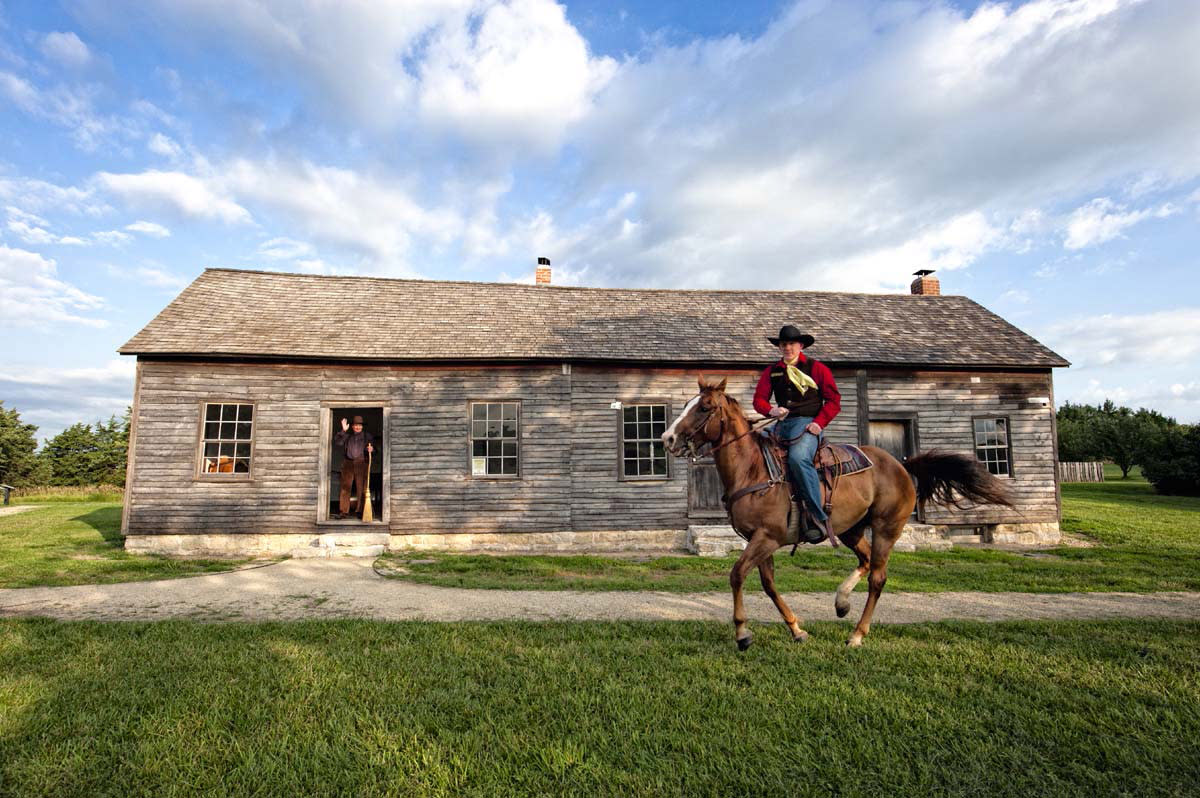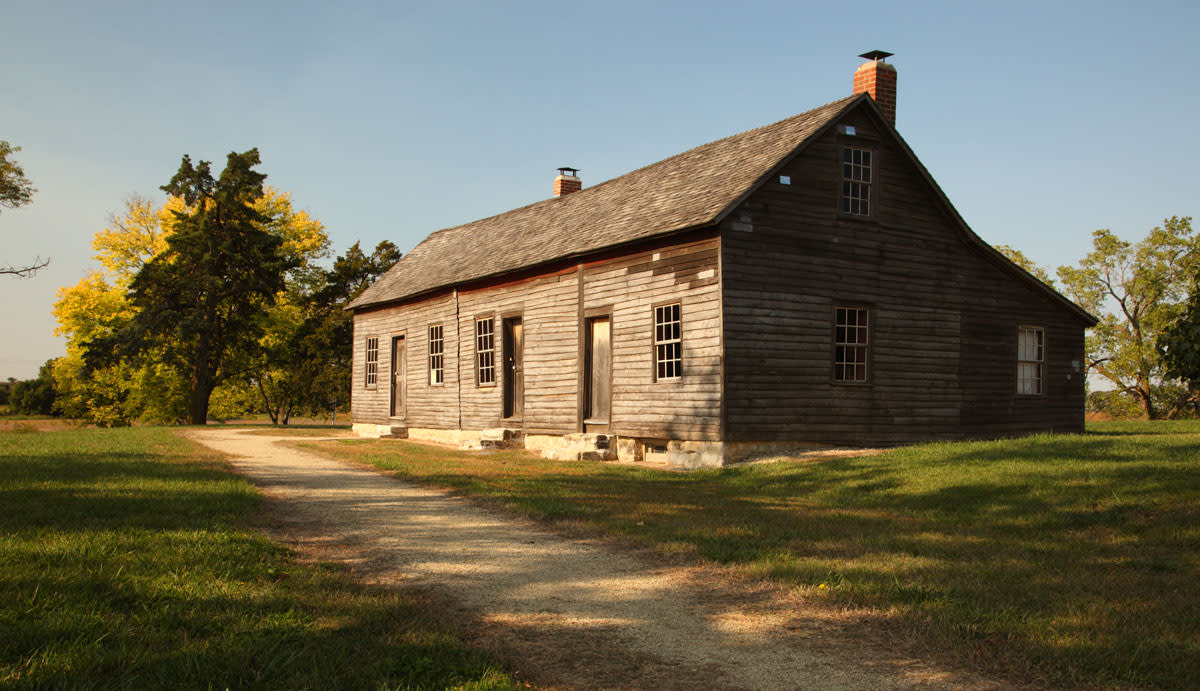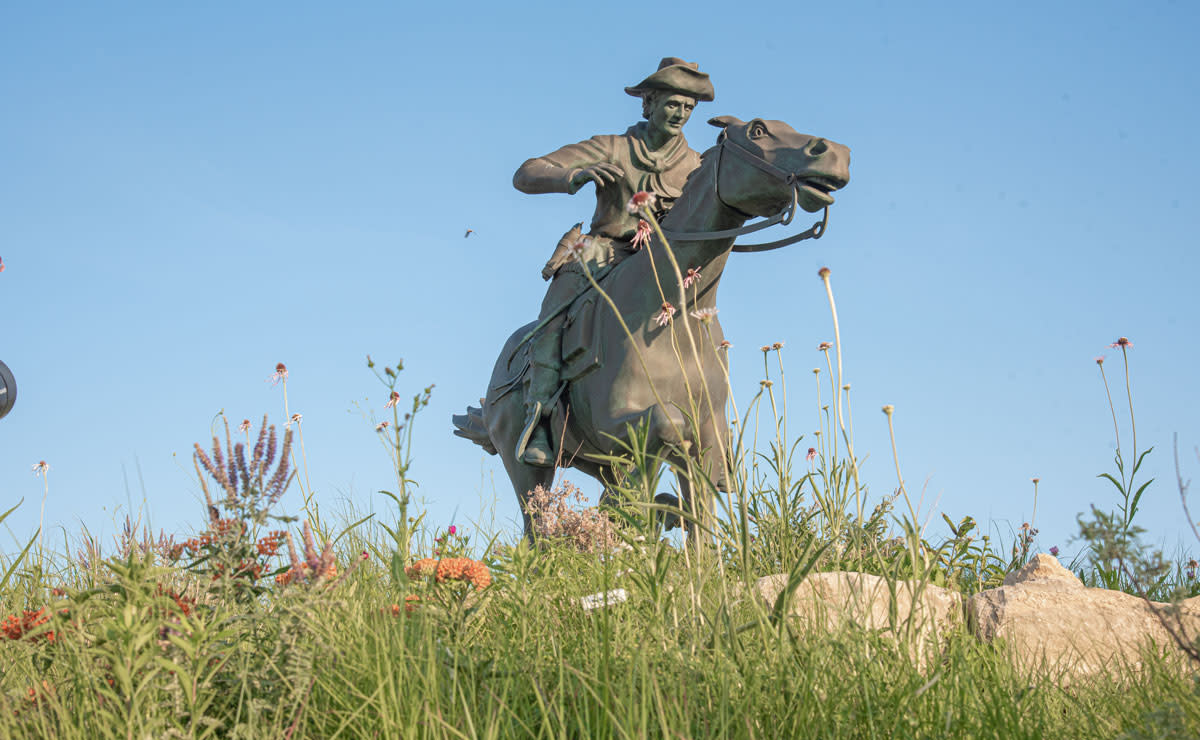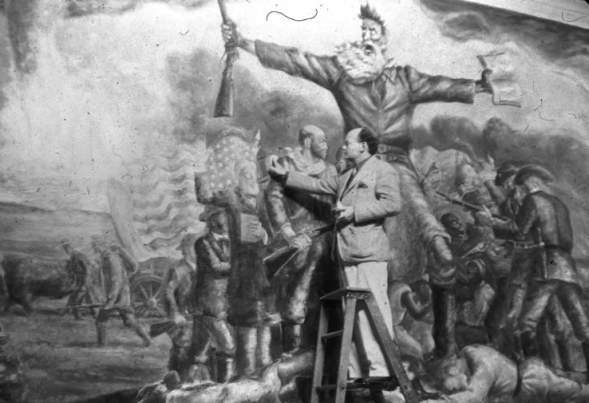
Kansas Pony Express sites continue to celebrate over 160 years of the legendary, short-lived mail system
Update: This article has been lightly edited from its original publishingWanted: Young, skinny, wiry fellows, not over eighteen. Must be expert riders, willing to risk death daily. Orphans preferred. Wages $25 per week. Apply Pony Express Stables.
In one of the West’s most fascinating stories, young men who courageously answered this advertisement rode horses across the Kansas prairie and rolling hills, traveling through summer heat, spring thunderstorms and winter’s blowing snow to carry mail from Missouri to California and back. The Pony Express, which operated between April 1860 and October 1861, continues to celebrate its brief but fabled history.
The first westbound Pony Express mailbag filled with letters, telegrams and newspapers left St. Joseph on April 3, 1860, and arrived ten days later, on April 14, in Sacramento, California. As the Kansas State Historical Society notes, this delivery speed was considerably faster than the overland stage system previously in use. The riders were able to deliver at this pace because of the system created by The Central Overland California and Pike’s Peak Express Company, who established the Pony Express. Once mail from the eastern part of the country arrived by train in St. Joseph, it was carried west by a succession of riders traveling day and night on horseback. Every 10 to 15 miles along the route stood a relay station, often in the home of a local resident who readied food, water, and a saddled horse for the incoming rider, who was given just two minutes to switch to the fresh mount before heading off to the next stop with the mail pouch. Riders traveled 50 to 75 miles before being replaced at a home station, where they stayed until the mail returned from the west. Before the Express was outmoded by telegraph system, it relied on the work of approximately 500 horses, 80 riders, and nearly 200 relay and home stations staffed by around 400 employees.
To this day, Kansas offers several sites to visit along its 139 miles of the Pony Express National Historic Trail. Two of unique significance are the Hollenberg Pony Express Station State Historic Site near Hanover and the Pony Express Barn in Marysville, both in their original locations.

The Hollenberg Pony Express Station, which also is listed in the National Register of Historic Places, tells the story of Gerat H. and Sophia Hollenberg, who agreed to open their home as a relay station that served as the last Pony Express stop in Kansas along the western route.
Site administrator Kristina Cook says the site’s surrounding acreage of native grasses and plants allows visitors to easily imagine a rider approaching on horseback with a pouch full of mail.
Inside the Visitors Information Center, exhibits discuss westward expansion, including information on both the Pony Express and the Oregon-California Trail, which also brought travelers to the Hollenberg home.
Cook provides personal, guided tours of the site where visitors can see artifacts including a mochila, the four-pocket mail pouch that flipped over the saddle and could not be removed until the rider dismounted. Period furnishings and clothing offer insight into daily life at the station.
Just south of Hanover, at the intersection of Kansas Highways 36 and 148, stands a large bas-relief brick sculpture featuring a rider on a galloping horse. A Kansas historical marker gives a brief history of the Pony Express and the nearby Hollenberg Station. In the distance stands a silhouette sculpture of a Pony Express Rider urging his horse, in full stride, up a hill.

The second intact historical site in Kansas is the Pony Express Barn in Marysville. Built by Joseph Cottrell in 1859 and leased to the Pony Express in 1860 as a livery stable, it also housed a blacksmith shop, according to Jan DeGroot, administrator of the Pony Express Museum located in the barn and an annex.
Inside, a movie explains why the Pony Express was needed. Mail sent by ship around South America took six months to get to the West Coast; by stagecoach, it took several weeks, if it arrived at all, DeGroot says. By the time it reached its destination, the information in newspapers and personal letters was most likely out of date, particularly in regards to national matters such as the country’s growing division over slavery at the time.
Among the artifacts displayed are period household items, blacksmith tools, and a replica mochila.

Less than two blocks away, Pony Express Plaza features Kansas artist Dr. Richard Bergen’s bronze sculpture of a horse and rider en route to the next station. Nearby is a unique mural that, when observed from a stationary position, is a fixed image of a Pony Express rider galloping across the prairie; however, as the viewer moves from one side to the other, the mural becomes a moving picture of the rider’s long duster coat lifting in the wind to reveal the mail pouches.
The Pony Express Museum in Seneca sits across from what was the original location of the Smith Hotel, where riders and horses switched, according to Mary Jane Fleming, president of the Seneca Pony Express Preservation Society. Inside the museum are recreations of a stable, blacksmith shop, saloon, school, and a Smith Hotel kitchen, which includes original artifacts.
Although successful in delivering the mail in just 10 days for 18 months, the Pony Express ended when the transcontinental telegraph line was completed in the fall of 1861.
Ways to Stay Connected
Read more about Kansas History
View ALlBlack History Trail of Geary County
Mar 08, 2024Jim Sands, President of the Black History Trail of Geary County / Photography by Nick Krug A county… Read More
Quindaro: A Great, Nearly Lost City of Free Peoples
Mar 07, 2024Photography by Andrea LaRayne Etzel & Carter Gaskins Quindaro was an abolitionist frontier city… Read More
From the Archives: Remembering John Steuart Curry
Jan 15, 2024Editor's Note: This article was originally published in the winter of 1992 by Don Lambert… Read More
From the Archives: Birth of the Helicopter
Jan 08, 2024Editor’s Note This article was originally featured in the winter issue of 1983 by Joan L… Read More
From the Archives: Kansas Outlaws
Oct 05, 2023The Sunflower State is known for its famous lawmen—but its infamous villains are legendary as… Read More









